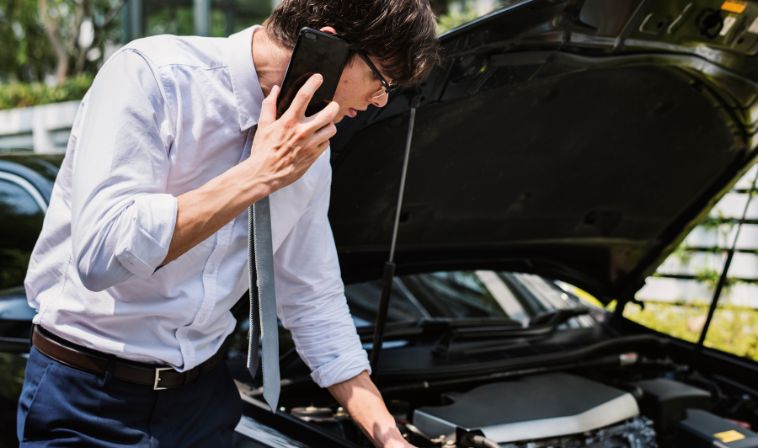What Is A Diminished Value Claim And How Do You File One?
07 July 2025
5 Mins Read

- Diminished Value Claims Explained
- Diminished Value Claims Explained: What Are The Various Types?
- Determining Diminished Value Claims Explained
- Steps To File Diminished Value Claims: Explained
- What Documentation Do You Need For Your Claim?
- How Do Diminished Value Claims Affect Your Business?
- What Are The Tips For Maximizing Your Diminished Value Claim?
- 1. Document Everything
- 2. Get Professional Appraisals
- 3. Know The Statute Of Limitations
- 4. Strengthen Your Negotiation
- 5. Consult An Accident Attorney
Did you know that there are approximately 6 million car accidents happening in the US every year? This shows how common traffic accidents are all over the country.
If you’ve been in a car accident and your vehicle was damaged, you may be dealing with more than just repair bills.
If you own a logistics business or any sort of business, you must be well aware of Diminished Value Claims.
As entrepreneurs, it will definitely affect your businesses, and not in a good way, my friend!
Therefore, if you are looking for an article where you can find all the information about Diminished Value Claims explained, you have come to the right place.
Even after the car is fixed, the value of the vehicle may significantly drop due to the fact that it was involved in an accident.
A diminished value claim in Colorado allows you to seek financial compensation for the difference between the market value of your car and its actual value.
This is measured before and after the accident, as well as its value after repairs.
But wait! The good news is that you can file a diminished value claim in every state except Michigan.
Diminished value claims help you recover financial losses due to the reduced market value post-accident.
So, what exactly does it involve, and how can you ensure you get the compensation you deserve?
Diminished Value Claims Explained

As I mentioned, diminished value claims can be filed to recover the loss in market value of a car once it has undergone repairs.
You can file the claim regardless of whether the vehicle looks as good as new.
I will say that the primary factors affecting diminished values are:
- The extent of damage,
- The make and model of the vehicle, and
- The condition of markets.
You will be required to gather evidence, such as repair invoices and vehicle appraisals to buttress your claim.
The way you would argue your case could be an important factor. It ensures that you receive a satisfactory amount of compensation.
Therefore, I want to clarify this so you understand exactly how diminished value works.
Diminished Value Claims Explained: What Are The Various Types?
I will tell you that three major types of diminished value claims exist:
- Intrinsic value
- Market value
- Repair-related value
An intrinsic value claim concerns the reduction in your automobile’s value because it’s been involved in an accident, even after repairs are made.
This is due to the fact that potential buyers may be hesitant to purchase a vehicle with an accident history, even if it’s been fully repaired.
The market value perspective is a diminution in resale value when you compare it to a car without that kind of damage.
Repair-related value is the diminished value after those repairs themselves have been completed.
Determining Diminished Value Claims Explained
If you want to determine the diminished value of an automobile, you should consider a number of factors.
The first consideration is the value before the accident the market price prior to damages.
Compare that with the extent of damages: the costlier the repairs, the larger the diminished value can be.
You have to factor in the vehicle’s make, model, and age as well. The current market trends and demand for your type of vehicle matter.
An independent expert can prepare an appraisal report that will serve as a solid basis for your claim.
Steps To File Diminished Value Claims: Explained
After determining the diminished value of your vehicle, the next step is to begin the filing process with your insurance company.
You should first make a call either to the insurance agent or the claims department of your insurance company so you can inform them of your intent to file.
Give them a clear explanation of the diminished value of your vehicle and the circumstances surrounding the loss.
You must prepare to discuss your findings and any evidence you’ve managed to compile.
In case the authority requires any forms, you must make sure you fill out everything exactly and submit it without delay.
Record all communication and documents submitted. Make sure to check up regularly until the claim is processed.
What Documentation Do You Need For Your Claim?
To file a successful diminished value claim, you need the right documentation. Start with the pre-accident value of the vehicle.
You can establish this by online valuation sources or appraisals.
Then, you have to collect repair estimates and invoice copies for the damages caused by the accident.
Furthermore, you must also attach a copy of the accident report, as it establishes vital points for the claim.
Photographing your vehicle before and after the accident with the aim of visually showing the damage to support the case might be helpful.
It is necessary to keep notes of loss of use and related expenses so as to better prove arguments for diminished value.
How Do Diminished Value Claims Affect Your Business?
Diminished value claims, although not inherently harmful, can negatively impact a logistics business or any other business that relies on logistics through:
- Potential financial losses
- Increased insurance premiums
- Reputational damage
The primary concern is the financial impact of diminished value, which can be significant, especially for vehicles or equipment involved in accidents.
Additionally, these claims can lead to higher insurance costs and, if handled poorly, damage the company’s reputation.
What Are The Tips For Maximizing Your Diminished Value Claim?
To maximize your diminished value claim, you will need strategic planning and keen attention to detail.
Moreover, you have to make your message clear and professional when negotiating with the insurance company.
With preparedness, you can guarantee a good outcome with regard to your diminished value claim.
1. Document Everything
Good documentation helps your claim. Be sure to gather:
- Accident reports from the police.
- Photos of all damage: major, moderate, and minor.
- Repair estimates, bills, and repair records.
- A detailed accident report from your insurance company.
2. Get Professional Appraisals
Hire professional appraisers to accurately assess your vehicle’s loss in value. They will look at:
- Structural damage or repairs.
- Comparisons to similar vehicles.
The vehicle’s original condition, its value before the accident, and its loss in market value.
3. Know The Statute Of Limitations
Every state has a deadline for filing a diminished value claim. If you miss this deadline, you can cancel your claim, so take action quickly.
4. Strengthen Your Negotiation
To negotiate effectively with insurance companies, use:
- The detailed reports from your professional appraisers.
- An insurance policy to check coverage terms.
- Documentation such as repair estimates, police reports, and a history report.
5. Consult An Accident Attorney
For complicated cases, especially those involving a driver who is at fault, consult an accident attorney.
You can get really helpful legal advice and help with property damage claims as well as uninsured motorist cases.



















Comments Are Closed For This Article